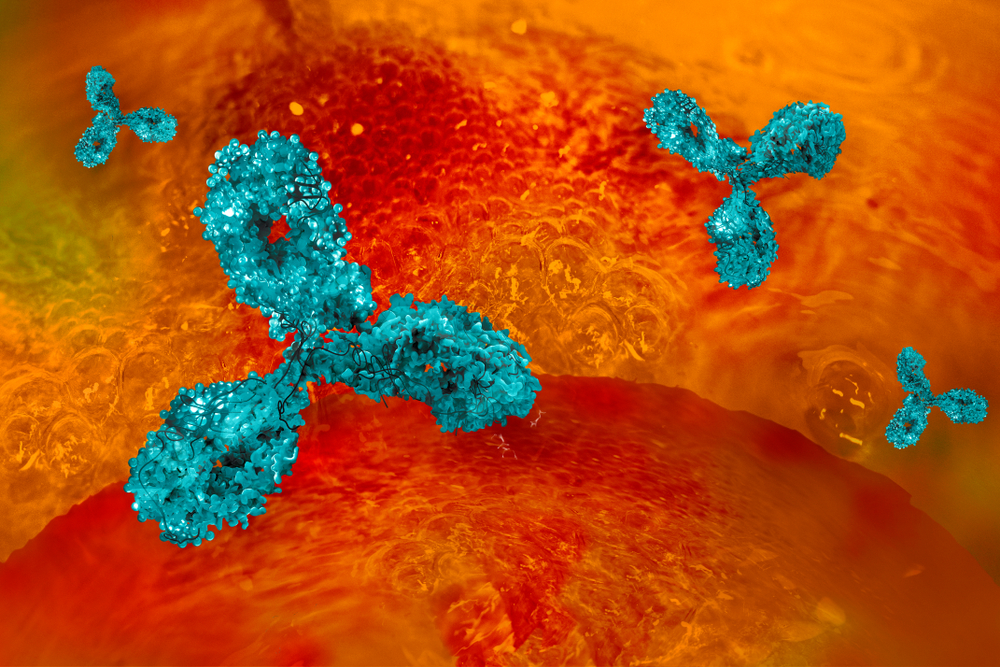Human chimeric anti-Rubella virus IgM (DD5)
Recombinant chimeric human IgM carrying variable regions of MAB12516, retaining its binding to. The antibody is pentameric and can be recognized by major platform assays.
The Anti-Rubella virus IgM pentamer is generated from a recombinant construct & co-transfection with J chain expressed in human cells & highly purified.The resulting IgM pentamer has a hydrodynamic radius and molecular weight consistent with published purified IgM data.Only one oligomeric form is observed in Size Exclusion Chromatography with Multi Angle Light Scattering (SEC-MALS) and no monomer is observed in Native PAGE
PRODUCT DETAILS – Human chimeric anti-Rubella virus IgM (DD5)
- Chimeric human IgM, monoclonal antibody.
- Rubella virus-like particles were used as immunogen.
- Presented as Liquid, DPBS Buffer.
- Greater than 95% purity by SDS-PAGE.
BACKGROUND
Rubella virus is a single stranded positive sense RNA virus. It is the sole member of the Rubivirus genus which belongs to the Togaviridae family of viruses. Rubella virus contains three structural proteins, the capsid protein, and glycoproteins E1 and E2. The virus also encodes non-structural proteins p90 and p150, which are involved in viral replication. Humans are the only known host of Rubella virus and infection is spread from person-to-person via respiratory aerosol droplets.
First isolated in 1962, Rubella virus is the causative agent of a highly contagious disease known as Rubella or German Measles. Rubella is an acute self-limiting and generally mild disease predominantly affecting children and young adults. The infection can be asymptomatic in some cases or may cause a mild fever with symptoms of malaise, conjunctivitis and a maculopapular rash (Lambert, N).
However, Rubella virus contracted during the first trimester of pregnancy is of significant health concern, as it can be passed to the foetus in approximately 90% of cases (WHO). Rubella infection in the foetus can result in miscarriage, foetal death or multiple congenital defects referred to as congenital rubella syndrome (CRS). Congenital defects associated with CRS commonly affect hearing, sight, heart and brain. Other life-long conditions associated with CRS include autism, thyroid dysfunction and diabetes mellitus (CDC).
Rubella infection and vaccination provide >95% chance of developing lifetime immunity. Vaccination, using a live attenuated strain of the virus, has significantly reduced the risk of developing Rubella, and CRS, in countries where a well-established vaccination program is in place. However, many countries still do not include Rubella vaccination in their National immunization programme and women of childbearing age are at high risk of developing Rubella in these areas.
REFERENCES
- Lambert N, Strebel P, Orenstein W, Icenogle J, Poland GA. (2015). Rubella. Lancet. Jun 6;385(9984):2297-307.
- World Health Organization: Factsheet/Rubella

